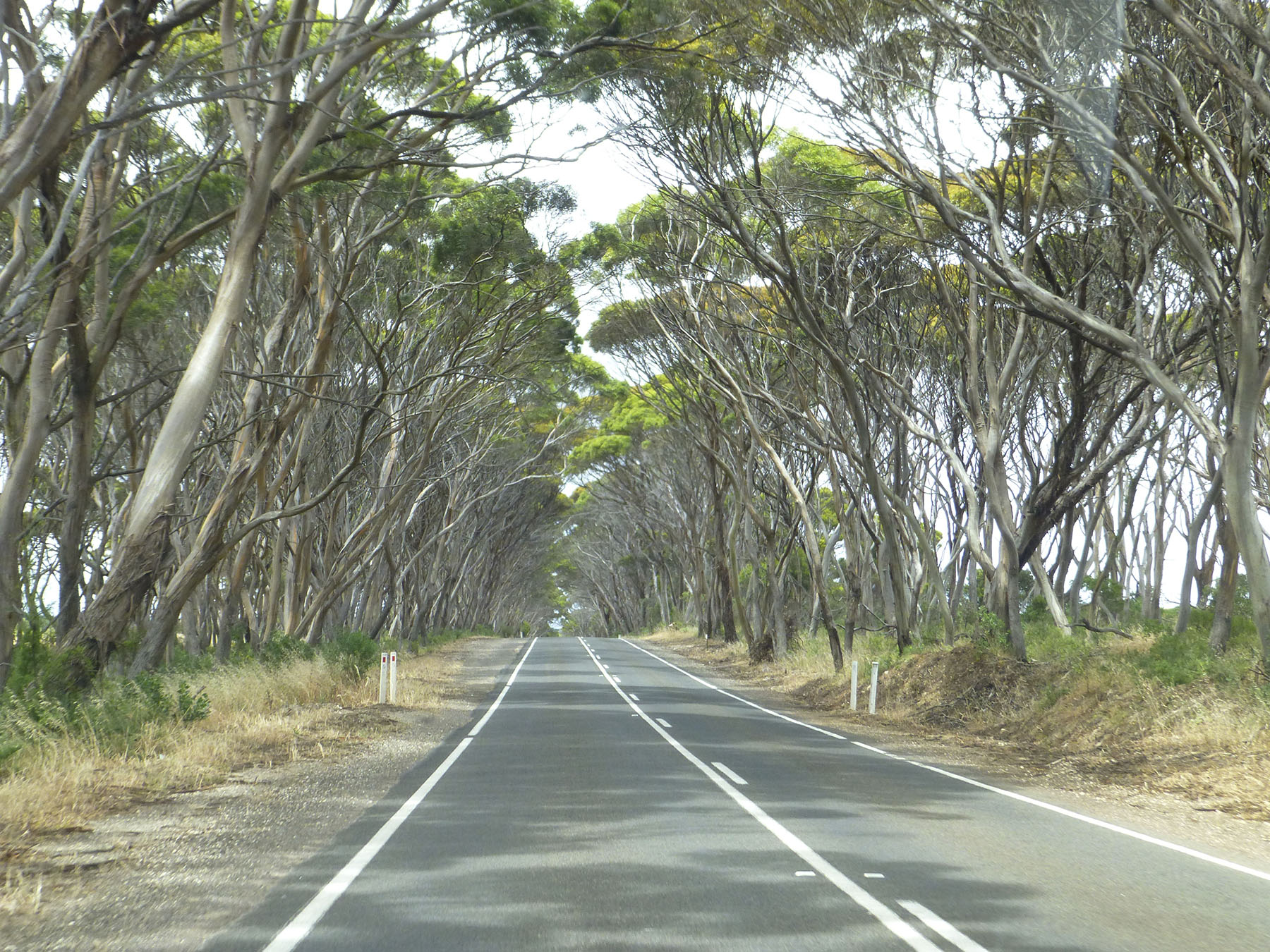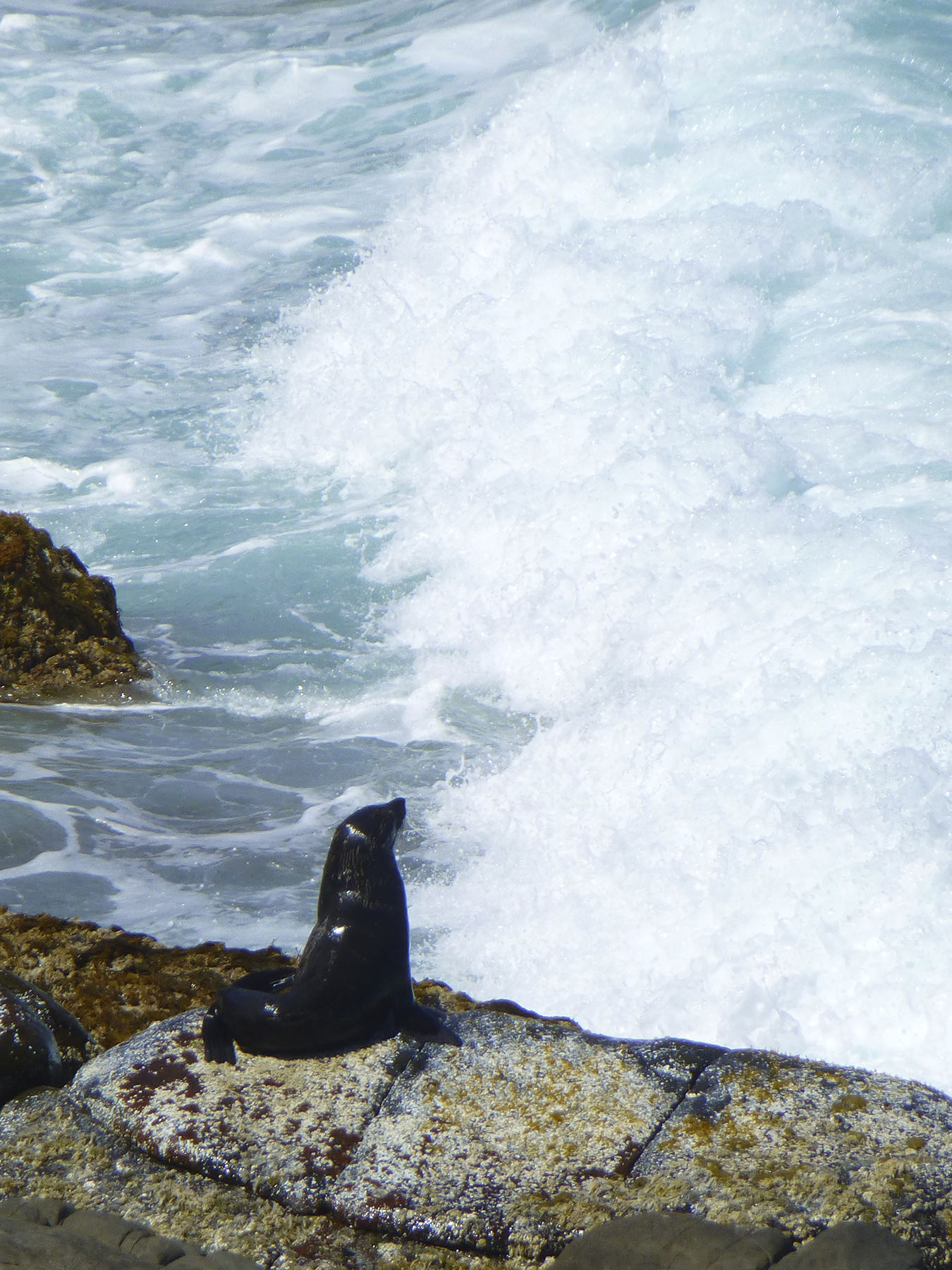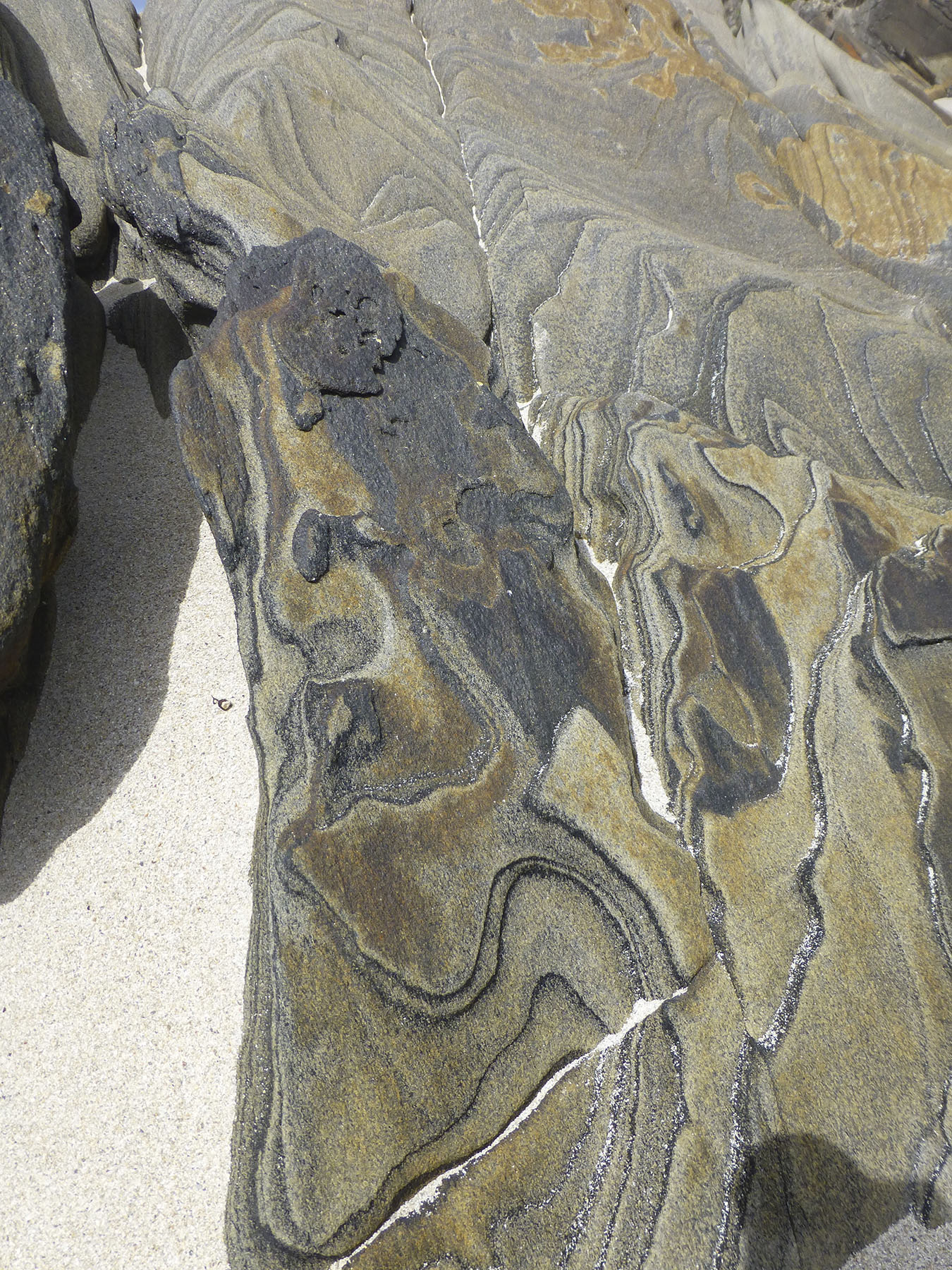12/05/13 - 12/10/13: Kangaroo Island, South Australia, Australia
Every time someone asked, “What’s next for you in Australia?” I’d reply, “Kangaroo Island,” and be met with a confused expression. “What are you going there for?” was the typical response. We didn’t have a good answer other than our guidebook highly recommended it. Considering the shared reaction to Kangaroo Island, it’s a wonder anyone lived there let alone heard of it. (And, in truth, several hadn’t.)
This got us thinking… Had we made a huge mistake? Were we wasting our time traveling to a remote island off the southern coast of Australia? Should we instead head inland to Uluru or visit Byron Bay? There wasn’t much point in questioning our choice, however, since we’d already purchased plane tickets and rented a car. Ironically, our master plan was to save money on this leg of the trip. How can you not when you’re camping by the sea and eating soup out of cans? The obscenely expensive ferry tickets proved us painfully wrong. We just hoped it would all be worth the unexpected hit to our budget.
Once we arrived, I popped in an audio tour we’d purchased to guide us along our clockwise tour of Kangaroo Island over the next five days. The program was called “Island Intrigue” and, like most things in Australia, it was overpriced but enjoyable. The constant commentary was a pleasant car companion as we puttered around the isolated countryside and seaside villages. The best part were the historic tales, specifically the ones about British Captain Matthew Flinders and the French explorer Nicolas Baudin. Both met while navigating around Kangaroo Island in 1802. Despite England and France being at war at the time, they struck up a friendship and shared geographic and scientific information with one another. They also helped each other survive by sharing resources for fresh water and good kangaroo hunting grounds. Captain Flinders himself was the one who named the bountiful island after seeing its shores teeming with kangaroos. Apparently, the marsupials were easy pickings and tasted fantastic after four months without fresh provisions. Those poor kangaroos never knew what hit ‘em.
As it happened, our first steps on Kangaroo Island followed the very footsteps of those explorers. We enjoyed a stroll along the beach in Penneshaw and stumbled upon Frenchman’s Rock where one of Baudin’s men carved an inscription detailing the fresh water spring. Hearing theatrical readings from Matthew Flinders journal, and stepping to the very place where these two surveyors met over 100 years ago, made me feel connected to the history of the island; I could practically see their tall ships moored off its shores.
On our first day traveling over Kangaroo Island the weather was schizophrenic. Rain, sun, wind, rain – the only thing consist was its inconsistency. Through sporadic drizzles, we rolled over cracking pavement toward the west, stopping on a slim isthmus where we climbed Prospect Hill. At the top we could see crashing coastline to the south and a wide bay just north. The landscape of the island looked practically untouched. The meandering road was the only sign of modern life amidst the wild scrub and swamp-covered earth. It was a beautiful view, but the weather coerced us to get back into our car and keep moving.
Half an hour later we pulled up to Clifford’s Honey Farm. It took 20 minutes on a dirt road to get there, but honey samples and homemade honey ice cream fed my determination. It turned out to be a surprisingly educational visit. We learned that Kangaroo Island was named a Bee Sanctuary back in 1885. At the time, Ligurian honeybees had been transported to the island straight from Italy. Because of the distance from the mainland, the bees thrived on Kangaroo Island and they remain isolated and disease-free to this day. Now, they are the only pure strain of Ligurian bees in the entire world! Not even their native city of Liguria, Italy can claim that anymore.
Another fascinating factoid we learned at the honey farm - bees can dance! We were given a bug’s-eye view into a hive where an excited drone bee shook his honey-maker. It’s not their love of music that inspires them, but a desire to share knowledge. Scientists believe the furious shaking and repetitive movements are a way of communicating where good pollination spots can be found to their fellow bees. How they determined that, I have no idea, but it was certainly entertaining.
Our meandering took us over to Seal Beach where we intended to walk along the boardwalk and view seals. Upon arrival, however, we learned that you either had to choose a guided tour or pay $15 each to simply walk along the beach. Yes, just walk. Since we’ve seen many seals in our lifetime, we both opted instead to change course and visit Bales Beach for free. It was a great decision. No one was around, so we had miles of pristine beach at our disposal. Waves were breaking at multiple points off shore, churning turquoise blue into frothy white. I tossed around dried sea sponges and found shells as large as my forearm! Those “shells” turned out to be cuttlebones, which are the backbones of cuttlefish. They had a very unusual texture and I knew something was amiss when I crushed one with my bare hands. I’d like to think I’m that strong, but nature knows better.
That evening we camped at Vivonne Bay, ate cheap soup out of a can, and fell fast asleep to the sound of waves lapping the shore. It was a good thing we slept soundly because the next morning we needed all the energy we could muster – we were going sand tobogganing!
Nearby lived a large swath of sand dunes affectionately named “Little Sahara”. Here, you could rent toboggans and surf the slopes at your own risk. Sand, as it turns out, isn’t as friendly as snow: it burns, it stings and, when a gust takes hold, it morphs into a million stabbing needles. Despite the tiny torture, Katie and I had a blast cruising the banks. Hardly anyone was around, so we rocketed at top speed, and flipped over a few times for good measure. Our skin was appropriately exfoliated by the end.
After a quick shower back at the campground (and I mean quick – it gave us 3 minutes of water!) we drove southwest to Admiral’s Arch. The day was hot and clear, and the walk down from the lighthouse was gorgeous. We strolled through seaside brush and enjoyed an amazing view of offshore islands and deep blue sea. Because of the weather change, however, we noticed the sudden appearance of an ever-present pest on Kangaroo Island – the black flies. They were like ordinary houseflies and didn’t bite, thankfully, but there were thousands of them and they swarmed your body like you were walking road kill.
We battled our new friends while viewing Admiral’s Arch, a craggy sea tunnel where New Zealand fur seals liked to frolic. After ten minutes of seal watching and fly swatting, an even larger swarm of tourists crowded the boardwalk. Since we couldn’t beat them away, we hiked back to our car and moved along to the Remarkable Rocks. This name aptly suits these unique stone structures that sit on the precipice of the ocean. They were formed from lava hundreds of thousands of years of ago. Over the ages, weather eroded them down to curvaceous statues teetering on the edge of the sea. Given time, they will eventually topple in, but for now people can wander through their narrow passages, sit in their dips and curves, and stare out at the edge of the world. If we could, we would’ve camped under their shelter but, alas, you can’t camp at the Remarkable Rocks.
Instead, we booked a campground at Flinder’s Chase National Park at the enchantingly named Snake Lagoon. This was a misnomer, as there were no snakes to be found and the lagoon was a dry field. The campground itself was incredibly basic – drop toilets, no water, and unpaved roads. As a result, we had the place entirely to ourselves! Oh wait, I meant us, and the flies. We were the best entertainment within five square miles, so they naturally flocked to our faces. Cooking dinner was a lesson in patience. And once twilight set in, the flies gave way to hordes of mosquitoes. We quickly jumped into our tent and spent the fading hours of daylight with those little bloodsuckers clinging to the netting. Sorry, little guys, you can look but you can’t touch.
Night on Kangaroo Island proved to be just as interesting as day. Our lantern was an insect beckon. Moths were thrumming against our tent and giant grasshoppers crawled overhead. Safe inside our bubble, I felt like I was watching a David Attenborough special. The world got even stranger when we heard a deep throaty cough… Or was it a moan? A groan? It’s hard to say, but it was loud, nearby, and disconcerting. We turned out our lantern and clung to our sleeping bags.
Come morning, we were eager to get moving, not just to avoid the flies but to get our legs pumping before we settled into another day of driving. Snake Lagoon Track was a sweet little hike that led us out to a mini bay boxed in by cliffs and jagged rocks. While walking to the water’s edge we saw a dead penguin lying on the sand. It was one of the smallest penguin breeds in the world, the blue penguin, also known as the fairy penguin. Moments later we saw a Kangaroo Island native – the Heath goanna. It’s a large reptile, around 2.5 feet long, and it was walking right toward us. I immediately hoped it would catch the scent of the dead penguin and give it a nibble. I know that may sound disgusting to some, but I love nature in all its varied states, and the opportunity to see a Heath goanna eating a blue penguin right in front of me sounded awesome! Sure enough, it became disinterested in us and turned toward the deceased. My wish was granted and the circle of life came swooping our way, treating us to some amazing carcass gnawing! What? Did I say too much?
At the park center we ate lunch and sauntered along a nature walk where we saw wallabies, geese, parrots and, best of all, koalas! Katie was thrilled to see her kindred spirit animals in the wild. One was even gracious enough to belch out his mating call. We recognized the sound instantly. It was the guttural cough we’d heard the night before! Apparently, the koalas were in heat and we’d inadvertently eavesdropped on its booty call.
It seemed our trip on Kangaroo Island couldn’t get any better. It was like walking through a National Geographic documentary! But that evening at Stokes Bay kicked it up a notch. This time it was the island’s namesake – kangaroos. As the sun dipped on the horizon, packs of kangaroos spread around us like cows grazing in fields. They nibbled, hopped, played, and punched their way around one another. Seeing two kangaroos boxing like heavyweights was thrilling. We watched from afar and then were given a close-up view when we returned to our tent, which was unexpectedly surrounded by the hopping critters. We stood silent and motionless, allowing them to drift through comfortably, not a care in the world. In what seemed to be an on-going theme, we were literally the only people at the campground experiencing this wonder.
On our final day of island life we found our way to Kingscote and explored the very first European colony in South Australia, Reeves Point, which was established in 1836. The small cemetery spoke of the attempts and failures at making the land hospitable. The site of the settlement was not as travelers had been led to believe. Not only was there no fresh water source nearby, but the ground was covered in dense shrub, which made it difficult to gather food and harvest crops. In the end, the settlers moved to Adelaide on the mainland, which later became the capital city of South Australia.
Standing at the top of Flagstaff Hill at Reeves Point, it wasn’t surprising that the early settlers remade their home elsewhere. Although the view was marvelous, overlooking turquoise waters swirling in the sea below, the wind was incredibly strong. I can’t imagine the squalls they must have faced!
Unlike those first colonists, we had been made very welcome on Kangaroo Island, not only by the land but by the creatures as well. I’d never experienced so much wildlife springing to life around me. From koalas, to goannas, to kangaroos jumping about, it was as if the island was shaking our hands and thanking us for our visit. No, thank you, Kangaroo Island, for being so beautiful and untouched. You were worth every penny.








































